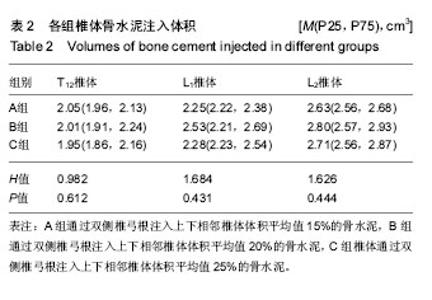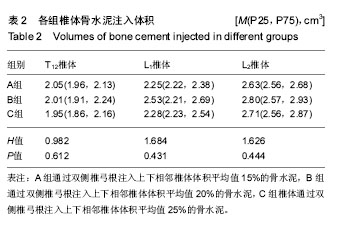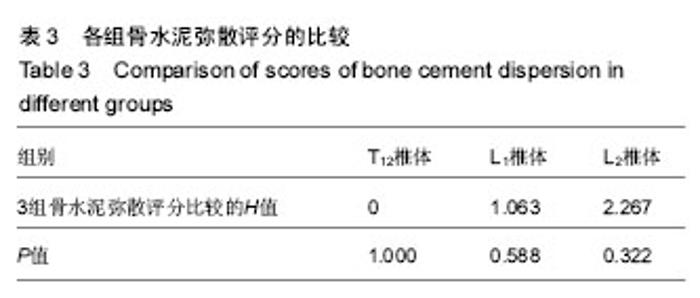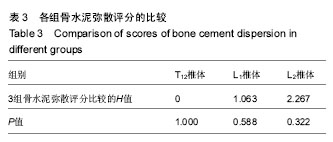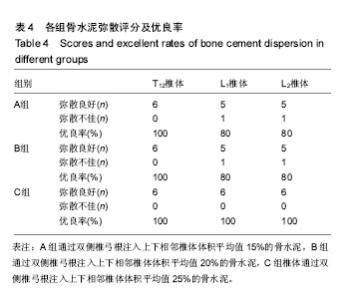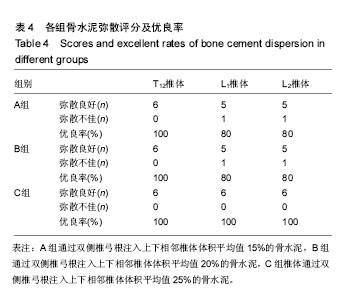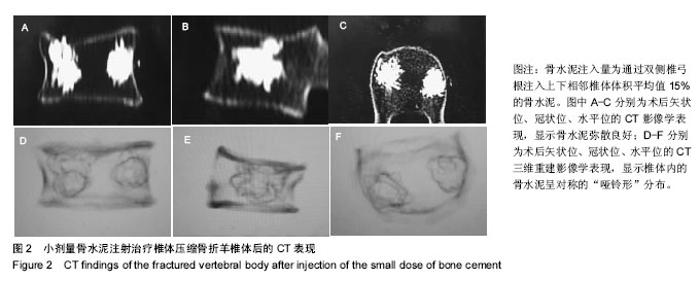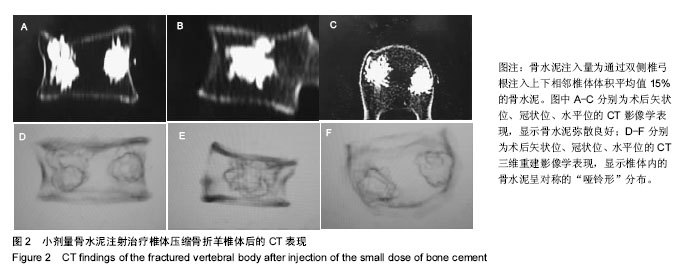| [1] Buchbinder R,Golmohammadi K,Johnston RV,et al. Percutaneous vertebroplasty for osteoporotic vertebral compression fracture.Cochrane Database Syst Rev.2015; (4):CD006349.[2] Lee DG,Park CK,Park CJ,et al. Analysis of Risk Factors Causing New Symptomatic Vertebral Compression Fractures After Percutaneous Vertebroplasty for Painful Osteoporotic Vertebral Compression Fractures: A 4-year Follow-up.J Spinal Disord Tech.2015;28(10):E578-583.[3] 黄伟权,梁德.骨水泥/椎体体积比在微创椎体强d化术中的应用价值[D].广州中医药大学硕士学位论文, 2013. [4] 张智海,刘忠厚,石少辉,等.中国大陆地区以-2.5SD为诊断的骨质疏松症发病率文献回顾性研究[J].中国骨质疏松杂志, 2015, 21(1):1-7. [5] 王亮,马远征,张妍,等.北京地区9103例体检人群骨密度流行病学调查研究[J].中国骨质疏松杂志,2014,20(8):952-955.[6] Kanis JA,McCloskey EV,Johansson H,et al.European guidance for the diagnosis and management of osteoporosis in postmenopausal women.Osteoporos Int.2013;24(1):23-57.[7] Peeters GM,Tett SE,Dobson AJ,et al.Validity of self-reported osteoporosis in mid-age and older women.Osteoporos Int. 2013;24(3):917-927.[8] Gstöttner M,Angerer A,Rosiek R,et al.Quantitative volumetry of cement leakage in viscosity-controlled vertebroplasty.J Spinal Disord Tech.2012;25(5):E150-154.[9] Mattie R,Laimi K,Yu S,et al.Comparing Percutaneous Vertebroplasty and Conservative Therapy for Treating Osteoporotic Compression Fractures in the Thoracic and Lumbar Spine: A Systematic Review and Meta-Analysis.J Bone Joint Surg Am.2016;98(12):1041-1051.[10] Kumar K,Nguyen R,Bishop S.A comparative analysis of the results of vertebroplasty and kyphoplasty in osteoporotic vertebral compression fractures.J Neurosurgery.2010;67 (3 Suppl Operative):ons171-188.[11] Xie W,Jin D,Ma H,et al.Cement Leakage in Percutaneous Vertebral Augmentation for Osteoporotic Vertebral Compression Fractures: Analysis of Risk Factors.Clin Spine Surg.2016; 29(4):E171-176.[12] Ren HL,Jiang JM,Chen JT,et al.Risk factors of new symptomatic vertebral compression fractures in osteoporotic patients undergone percutaneous vertebroplasty.Eur Spine J.2015;24(4):750-758.[13] Belkoff SM,Mathis JM,Jasper LE,et al.The biomechanics of vertebroplasty. The effect of cement volume on mechanical behavior.Spine(Phila Pa 1976).2001;26(14):1537-1541.[14] Graham J,Ahn C,Hai N,et al.Effect of bone density on vertebral strength and stiffness after percutaneous vertebroplasty.Spine(Phila Pa 1976).2007;32(18):E505-511.[15] 郭华,郝定均,贺宝荣,等.骨水泥在腰椎骨质疏松性骨折椎体内容量和分布状态的生物力学研究[J].美中国际创伤杂志, 2012, 11(1):89-92.[16] 李军科,齐向北,黄习彬,等.椎体成形术中最小骨水泥注入量的研究[J].中华实验外科杂志,2016,33(1):192-194.[17] Li K,Yan J,Yang Q,et al.The effect of void creation prior to vertebroplasty on intravertebral pressure and cement distribution in cadaveric spines with simulated metastases.J Orthop Surg Res. 2015;10:20.[18] Widmer Soyka RP,Helgason B,Hazrati Marangalou J,et al.The Effectiveness of Percutaneous Vertebroplasty Is Determined by the Patient-Specific Bone Condition and the Treatment Strategy. PLOS One.2016;11(4):e0151680.[19] Yang EZ,Xu JG,Huang GZ,et al.Percutaneous Vertebroplasty Versus Conservative Treatment in Aged Patients With Acute Osteoporotic Vertebral Compression Fractures: A Prospective Randomized Controlled Clinical Study.Spine(Phila Pa 1976). 2016;41(8):653-660.[20] Chen WJ,Kao YH,Yang SC,et al.Impact of cement leakage into disks on the development of adjacent vertebral compression fractures.J Spinal Disord Tech. 2010;23(1): 35-39.[21] Komemushi A,Tanigawa N,Kariya S,et al.Percutaneous vertebroplasty for osteoporotic compression fracture: multivariate study of predictors of new vertebral body fracture.Cardiovasc Intervent Radiol. 2006;29(4):580-585.[22] Wang H,Sribastav SS,Ye F,et al.Comparison of Percutaneous Vertebroplasty and Balloon Kyphoplasty for the Treatment of Single Level Vertebral Compression Fractures:A Meta-analysis of the Literature.Pain Physician. 2015;18(3): 209-222.[23] Yi X,Lu H,Tian F,et al.Recompression in new levels after percutaneous vertebroplasty and kyphoplasty compared with conservative treatment.Arch Orthop Trauma Surg. 2014; 134(1):21-30.[24] Jin YJ,Yoon SH,Park KW,et al.The volumetric analysis of cement in vertebroplasty: relationship with clinical outcome and complications.Spine(Phila Pa 1976). 2011;36(12): E761-772.[25] Nieuwenhuijse MJ,Bollen L,van Erkel AR,et al.Optimal intravertebral cement volume in percutaneous vertebroplasty for painful osteoporotic vertebral compression fractures. Spine(Phila Pa 1976).2012;37(20):1747-1755. |


